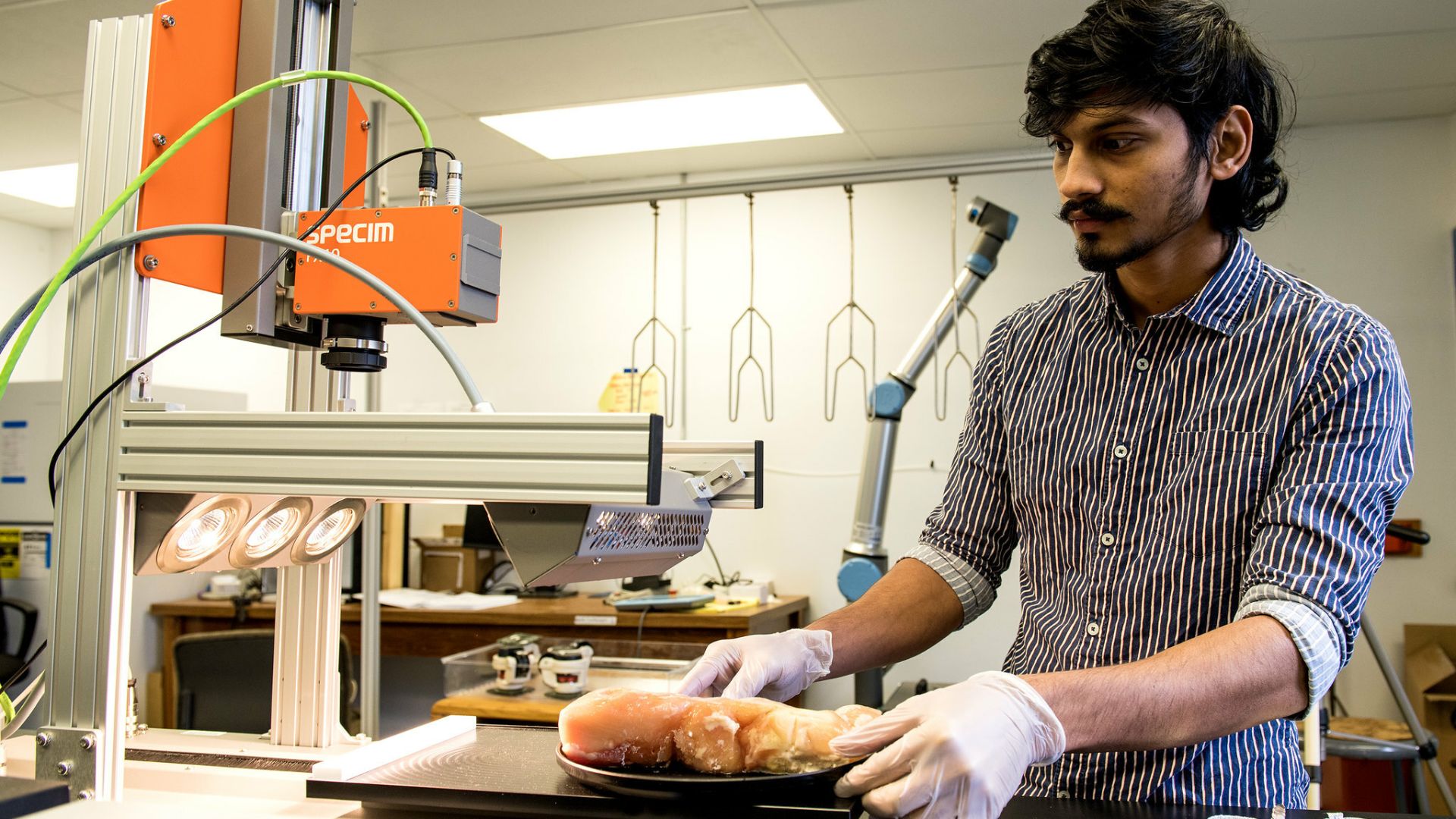High-tech cameras would detect “woody breasts”

A multidisciplinary team of scientists at the Arkansas Agricultural Experiment Station are testing to see if hyperspectral images can be used to detect a chicken breast defect known as “woody breast” that costs the poultry industry millions of dollars annually and decreases customer satisfaction. Dongyi Wang, assistant professor of biological and agricultural engineering, explains that hyperspectral imaging is a non-invasive sensing technique that combines a near-infrared sensor with a high-definition color camera to capture physical and chemical information.Woody breast detection with a hyperspectral camera system would take just a few seconds with a computer instead of grading by hand. “If hyperspectral imaging can be used in a poultry processing plant, that labor force could be diverted to another area.”
“Woody breast is still a safe product. It just can have a crunchy texture in some cases that is not appealing to customers, but it can be diverted for further processing into products like chicken nuggets, sausage, or chicken patties where the defect is not as noticeable,” said Casey Owens, the Novus International Professor of Poultry Science at the experiment station. Owens said one theory is that the fast-growing birds may be producing muscle faster than the blood vessels can support them, leading to muscle fiber damage and therefore increased collagen deposits. Chaitanya Kumar Reddy Pallerla, a food science graduate student working on the project, said each image with a hyperspectral camera takes up about 1 gigabyte of data. The photo is processed by a computer and correlated with a texture map indicating hardness levels in the fillet created with Owens’ previous research. Once calibrated, the system would rely on the images alone to detect woody breast. Wang said the hyperspectral camera, so far, has detected woody breast meat with about 84 percent accuracy. The goal is to accommodate high-speed sorting on a conveyor belt, or handheld portable devices, he added.